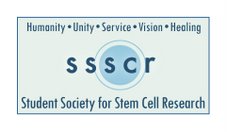Encourage stem cell research in all ways
Last week's news of breakthroughs should never mean a stop to promising works in progress
Copyright 2007 Houston Chronicle
Advances published last week in the area of stem cell research hold great promise, particularly for those who seek to realize the potential of embryonic stem cells.
The process described in studies published in the journals Science and Cell could revolutionize the way in which such work is pursued in the future.
However, all of this is couched in those terms: promise and could. Scrutiny of the work is in its early stages, and we do not know how far such work can go; nor are we aware of all the pitfalls involved. Such unknowns always exist in science and should not impede an enthusiastic spate of work in this area.
On the other hand, it should not halt work in areas that are already established and have been under way for nearly a decade.
Currently, research in the use of a technique called somatic cell nuclear transfer to produce patient-specific human embryonic stem cells holds great promise as well, both for understanding disease development and progression, and for organ and tissue replacement.
Unfortunately, legal constraints that restrict public access to embryonic stem cells lines have delayed this work in Texas and nationally. Indeed, much of the enthusiasm for the new work published last week is generated by the fact that it avoids these legal and ethical issues.
Stem cell nuclear transfer involves taking the genetic material from a mature cell, such as a skin cell, and transferring it into the nucleus of an egg from which the genetic material has been removed. The egg then divides and produces an embryo that is genetically identical to the mature organism from which the genetic material is drawn. Dolly, the first cloned sheep, came from this kind of effort. The promise of the technique lies in its potential to produce patient-specific stem cells that can be used to study disease and eventually produces treatments.
Although stem cell nuclear transfer has worked effectively in rodents and other experimental animals, it has not yet worked to produce patient-specific stem cells. Earlier this month, a research team led by Dr. Shoukhrat Mitalipov at the Oregon Health & Science University reported success using the technique with Rhesus macaque monkeys. This was the first report of success for such work in primates. It offers considerable promise and renewed hope that the procedural modification will work in other higher primates, including humans. The successful breakthrough was praised as "highly encouraging" by stem cell researchers far and wide, including Dr. Paul Simmons at The University of Texas Health Science Center at Houston and Dr. Margaret Goodell, director of Baylor College of Medicine's Stem Cell and Regenerative Medicine (STaR) Center.
Even the British creator of the cloned sheep Dolly, Dr. Ian Wilmut, praised the work of the Oregon team as a significant step forward toward human application. However, in a separate report, he personally vowed to abandon the stem cell nuclear transfer technique for cloning human cells in favor of the new procedure revealed in Cell and Science last week.
Using slightly different techniques that involve the same principle, the two teams — one from the University of Kyoto in Japan and the other from the University of Wisconsin — created pluripotent human stem cells using the process known as "deprogramming" human somatic cells (i.e., skin fibroblasts)
Such developments should be seriously considered by the stem cell research community, as they offer yet another rational approach to making patient-specific pluripotent stem cells.
The new discoveries generate optimism about future development of techniques that may circumvent the use of human embryonic stem cells. However, I, along with others in the field, believe that to disregard any procedure that currently holds promise is shortsighted and scientifically risky. Stem cell nuclear transfer already holds distinct promise, as the Oregon team's ability to produce a wide array of embryonic cells in experimental primates demonstrates.
Choosing to focus on only one avenue of research or type of cell source, would — at this stage of regenerative medical research — be irresponsible, unreasonable and premature. Promising and successful research exploring human stem cells should be supplemented with — not supplanted by — new and potentially exciting approaches, with all forms of research moving forward along multiple independent paths.
Scientific research in cancer, diabetes, tissue regeneration or other areas should proceed freely and openly along all viable lines of investigation until there is sufficient progress that can be successfully applied to the treatment and alleviation of diseases and human suffering.
In fact, these various lines of research will probably produce new findings that will complement each other and expand our depth and breadth of knowledge. Exciting new discoveries will be made in the field of embryonic stem cell research, and no one knows what important discoveries would be missed if we were to abandon stem cell nuclear transfer to "place all of our eggs in one new basket," especially if that decision were largely driven by emotional and political expediency.
Brinkley is senior vice president and dean of the Graduate School of Biomedical Sciences at Baylor College Of Medicine. He can be reached at brinkley@bcm.
Change settings via the Web (Yahoo! ID required)
Change settings via email: Switch delivery to Daily Digest | Switch format to Traditional
Visit Your Group | Yahoo! Groups Terms of Use | Unsubscribe
__,_._,___










